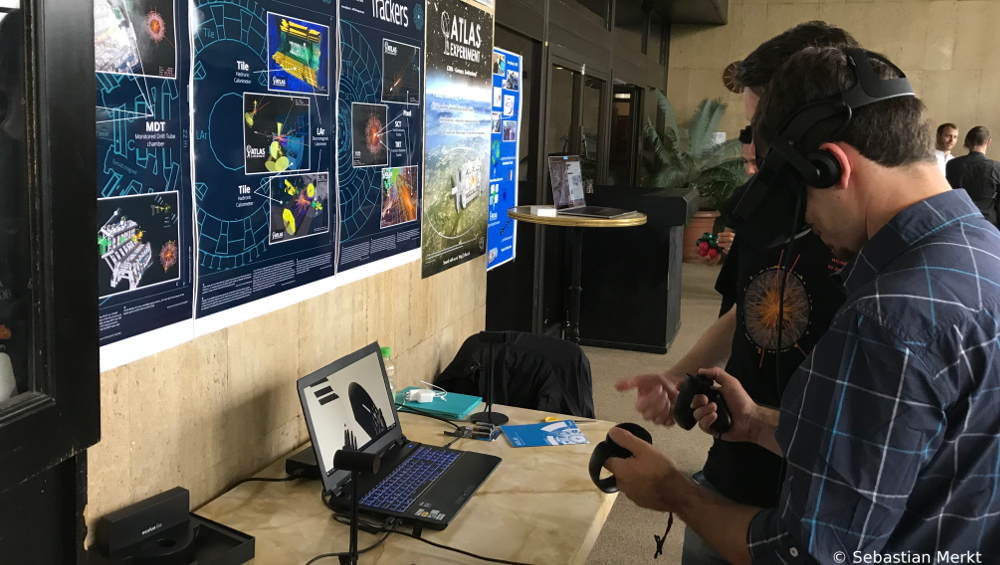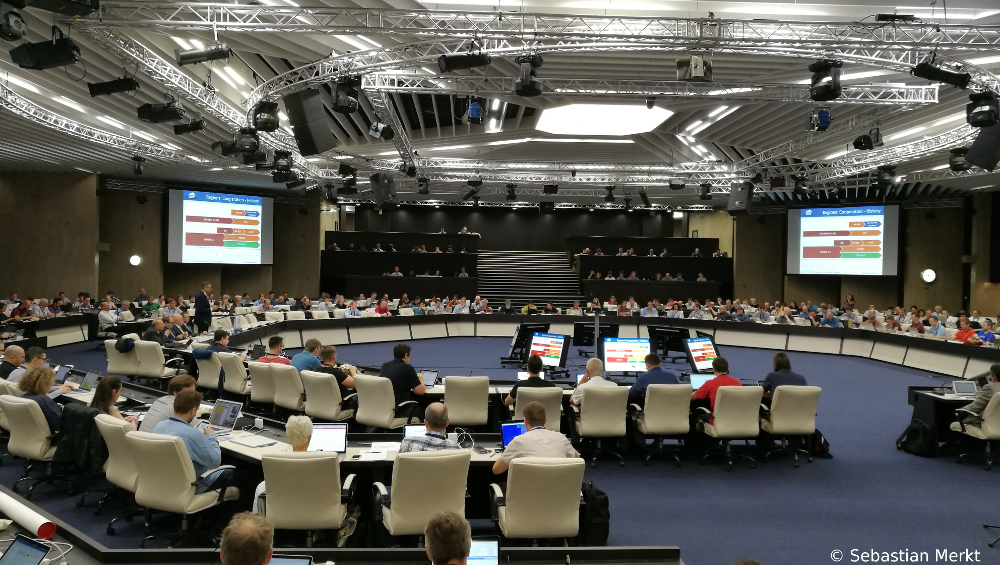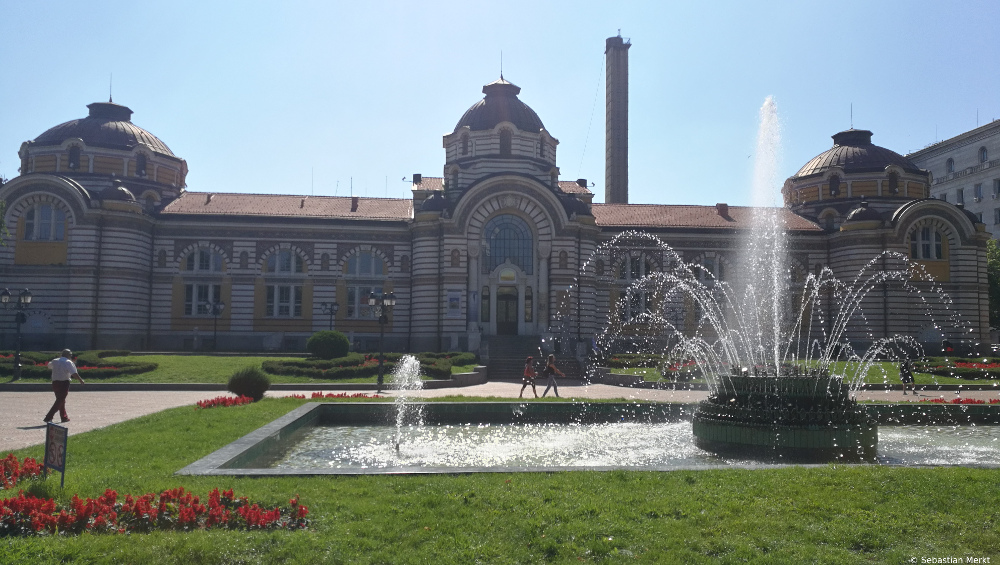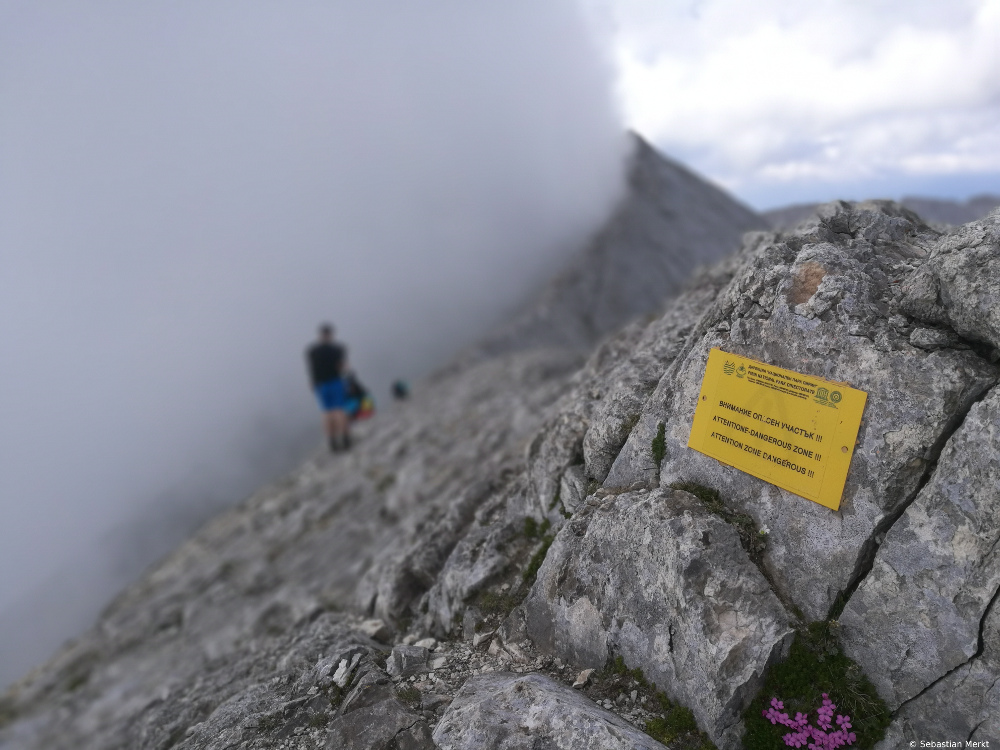CHEP 2018
The 23rd international conference on Computing in High Energy and Nuclear Physics
CHEP 2018
The 23rd international conference on Computing in High Energy and Nuclear Physics (CHEP) 2018 was held from 09. to 13. July in Sofia Bulgaria. Approximately 600 physics and computing experts met to discuss the latest in high-end computing, machine learning and data management. Check out EPJ Web of Conferences for the open access conference proceedings of all the talks and posters.
More information
The universal science

Prior to the CHEP conference, an outreach event under the title Universal science was held. Experts from different . Topics were research, computing and diversity in science. Also, the ATLAS experiments outreach team showed demonstrations of the ATLASrift Virtual Reality application. Visitors were able to get a feeling how it is to explore the large underground cave where the ATLAS experiment is located.
The venue

CHEP 2018 took place in the National Palace of Culture, NDK, a Soviet era conference center on the heart of Sofia. The plenary sessions were hosted in a large conference room, arranged symmetrically around the center, with screens in the middle and on the side walls. This made you feel like you were in some United Nations debate. The parallel sessions were located in several smaller rooms, scattered across 3 different floors. During the breaks, coffee and cookies or other sweets and baking goods were served. Lunch was served on a balcony where you could enjoy the nice view over the city while trying different local foods. There was usually a buffet with several different main dishes, salads, deserts that changed each day. Dinner was not served at the event, which gave us the opportunity to explore the restaurants and bars in the city.
But of course we all came for the physics and computing. There was a huge verity of talks and topics, too many to attend them all. In fact, there were 7 different parallel sessions, ranging from online and offline computing to distributed computing, from data handling to software development, from machine learning and physics analysis to clouds, virtualization and containers, all the way to networks and facilities. On top of that, there was also a poster session covering at least as many different topics. Unfortunately this variety of parallel sessions meant you had to carefully chose which sessions you attended. For me this was mainly the offline computing session, which was the track I gave my talk in and the machine learning and physics analysis session. For me it was especially interesting to see how machine learning is becoming more and more a standardized tool in physics analysis and physicists are finding new ways to exploit these powerful tools. And even more, how physicists tend to use more industry and open source tools rather than implementing their own special tools. One example is the programming language Python, which is becoming more popular in the High Energy Physics community, since there are powerful machine learning packages available. For, as someone who seeks to make the transition from academia to the industry, this is a favorable development, since the usage of common tools makes such a transition much easier.
The city

CHEP 2018 was held in Sofia, the capital of Bulgaria and although the schedule of the conference was pretty packed, I tried to see as much of the city as I could. This included some evening walks across the city, looking for a place to eat and drink, but also a sight seeing tour offered by the conference organizers. During this 2 hour tour we could see most of the sights located in the city center, including the Saint Aleksandar Nevski cathedral with its golden cover, the church of St. Petka and many other churches, governmental buildings and museums. However, the most interesting sight to me was an ancient Roman highway, running underneath the city, that can nowadays be used to access the subway station Serdika. The Sofia nightlife also had a lot to offer. We went to several different bars, had all the local beers and the local liquor specialty Rakia, made of grapes or other fruits. Coincidentally, the soccer World Cup in Russia was going on during my stay and we found a public screening in a park close by where the served foods and drinks during the matches.
The side events

Clouds caught by the mountainside at the alpine ridge Koncheto in the Pirin mountains.
For the weekend after the conference the organizers arranged for several side events that people could participate, such as a visit to the Black Sea or an ancient castle. I chose to go for one of the hiking trips into the Pirin mountains, located 2 hours south of Sofia. It was a three day trip that included transportation, accommodation, a visit to the church "St. Teodor Tiron and Stratilat" in the small village of Dobarsko, known for it's beautiful frescoes and a visit to a small village, where a group of locals served us homemade specialties, including their homemade Rakia, and sang folk songs. The hiking trip was about 18km long and included almost 1200m of ascent. But all that effort was worth it. When we reached the top we had a magnificent view of the surrounding countryside. The weather, although cloudy, made the view even more interesting. The mountain ridge Koncheto that was our trail was also a barrier for the clouds. These got caught on one side of the mountain and made for a surreal picture.
The proceedings
All oral and poster presentations were collected in conference proceedings and published in the EPJ Web of Conferences online journal. You can find the article "Going standalone and platform-independent, an example from recent work on the ATLAS Detector Description and interactive data visualization" here.